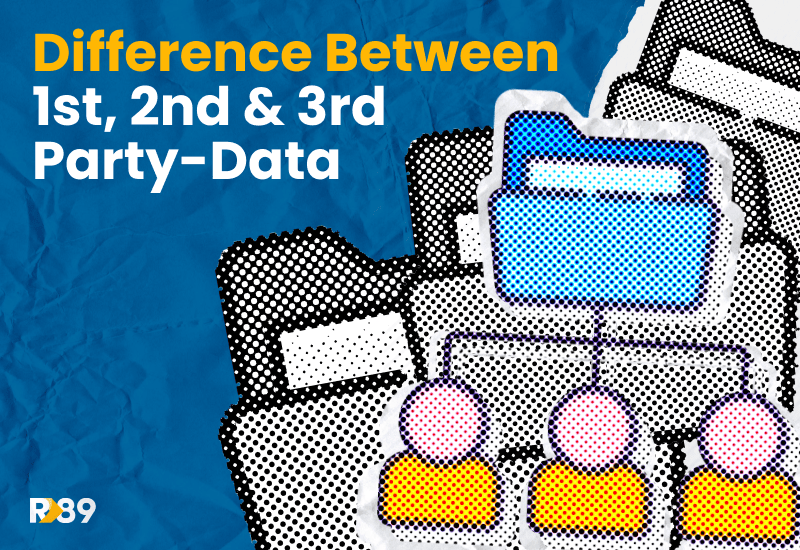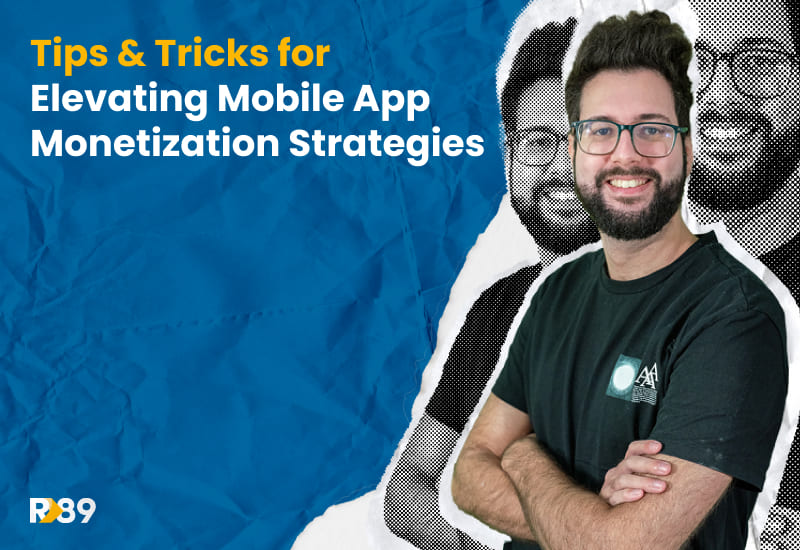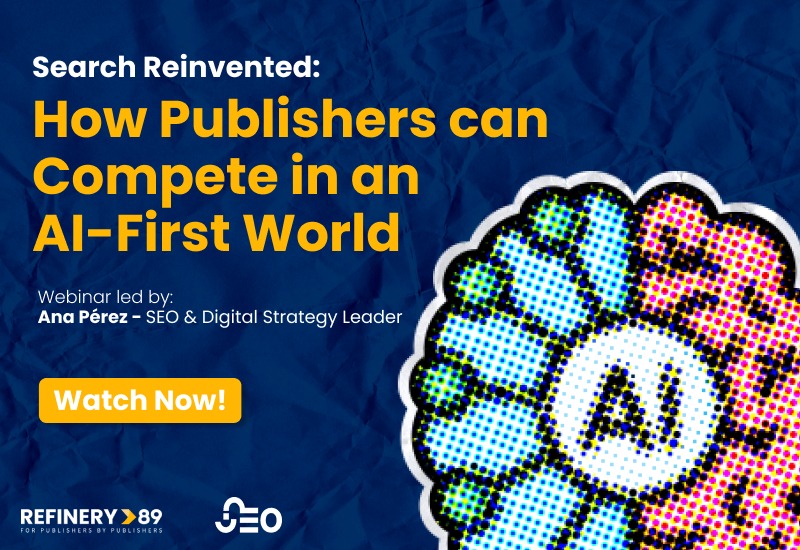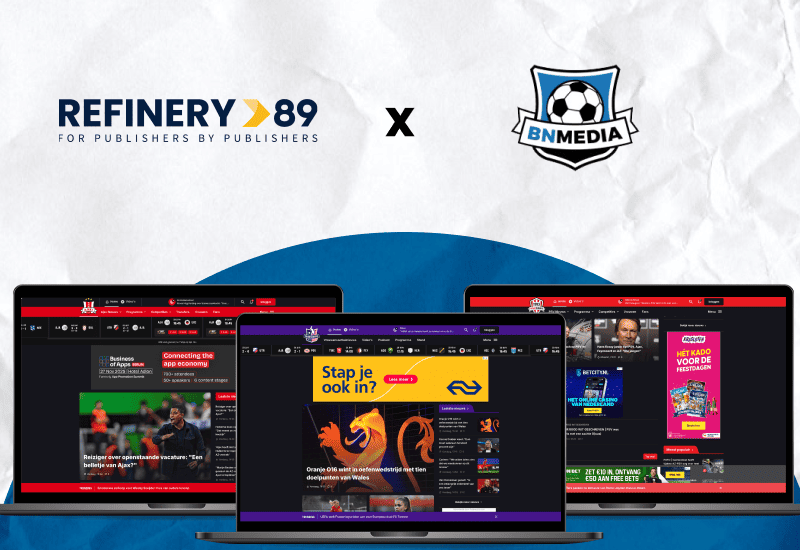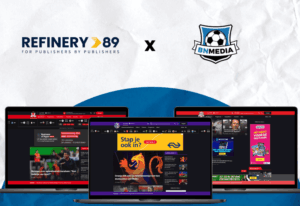Spoiler alert: The difference between first, second, and third-party data is how you (publishers and advertisers) get your hands on the information.
Let us explain. We’ll go over each type of data and give some examples of how you could apply them to your ad strategy, whether if it is to increase your site’s ad revenue or improve your campaign’s targeting.
What is First-Party Data?
First-Party Data is all the information that comes from your own sources, like your website for example. It’s basically any data from your audience collected directly by you. This information could be about your user’s behavior or your website/business performance.
What are the benefits of First-Party Data?
Picture this data as if it’s your own private gold mine. This type of intelligence is extremely valuable, since it comes straight from your own users. Its accuracy and reliability can help you shape your ad strategy, create tailored content for your target user, and give them a more personalized experience.
Some examples of First-Party Data:
- Website insights (audience demographics, traffic, impressions, content engagement, forms, etc.)
- CRM data
- Email subscriptions
- Purchase History
- Surveys
- Reviews
How to collect First-Party Data?
Incorporate Sign-Up forms in your website:
With this feature, you could get your users’ contact information and other types of demographic insights like their ages or addresses. These could include forms for participating in events, for signing up to a loyalty program, for subscribing to a newsletter, or to access exclusive content. It’s important to keep these forms engaging so users feel compelled to fill them out.
Create content for social media and interact with your customer:
Ask your audience for information in exchange of content. You can do this through polls or by encouraging them to interact with your posts. The social media platforms themselves contain metric management tools where you can check insights like your follower’s gender, age, active hours, and reactions to your content and its reach.
Use Data collection tools:
-
- Website’s analytics: There are plenty of tools to extract your website’s most relevant insights like traffic, customer behaviors, demographics, and engagement, and the best example of this is the fans favorite, Google Analytics. It’s free to use and all you have to do is add GA4’s tracking code to your website to get the full breakdown of your metrics.
- Email Marketing: Learn how your audience reacts to your email marketing efforts by checking insights like click-through-rate, open rate, unsubscribe rate, or conversion rate. To get the job done you can count on marketing automatization tools like MailChimp or Active Campaign.
- CRM Systems: Customer Relationship Management software like Sales Force, Zoho CRM, and HubSpot allow businesses to centralize their audience data not only for analysis, but for automating different tasks regarding lead nurturing and retention.
Send surveys to your audience:
Another way to get direct feedback from your customers and learn about their preferences and behaviors. You can do it through polls, quizzes or satisfaction surveys. Platforms like Survey Monkey, Typeform, or Google Forms would do the trick (and they are FREE!).
What is Second-Party Data?
Second-Party Data is First-Party Data that has been shared or sold by the person who collected it to a partner.
Imagine you are a publisher who runs a fitness blog. You could sell (following privacy regulations) the First Party-Data you collected from your website to an advertiser who has a protein shake company. This First-Party Data you gave to the advertiser becomes Second-Party Data to that company you sold it to.
What are the benefits of Second-Party Data?
This type of data is a high-quality option that’s still very reliable since the origin is a trusted source. For advertisers it’s great for scaling campaigns and for reaching targets outside of your immediate audience. There’s also more control over the whole exchange process. This could open a door that leads to partnerships for business growth.
How to collect Second-Party Data?
The keyword here is Partnership. In order to collect second party-data you’ll need to stablish an agreement with a partner who can provide high quality insights about a potential audience to scale your advertising campaign.
What is Third-Party Data?
Third-Party Data is the information gathered by data aggregators, like data management platforms (DMPs) such as Nielsen or Lotame, from a bunch of different sources and then sold to multiple companies for their use.
In programmatic advertising, the process of selling this data goes through DSPs (Demand Side Platforms). This information alone may not be as reliable as First-Party Data because there are more quality and privacy concerns involved but combining them together will deepen your understanding of your users. Advertisers, this will enable you to optimize your campaigns which will lead to a potential increase in your revenue. Great, huh?
What are the benefits of Third-Party Data?
Third-Party Data will allow you to reach a wider range of people beyond your primary audience. It’s a good reference for learning about what’s trending in the market, gaining an understanding of potential segments and refining targeting. This last part comes very handy for advertisers.
How to collect third-party data?
- Data Marketplaces: Data Marketplaces are online platforms where data providers sell their information to data consumers. DSPs have these marketplaces integrated for purchasing data. AWS Data Exchange is an example of these data marketplaces. They have a wide range of data sets to choose from for improving your ad targeting.
- Data brokers: These are companies dedicated to collecting information from people and then selling it to other companies. Data brokers gather personal and sensible data from users and in a lots of cases they are not entirely aware of what will be done with their information. Therefore, it’s needless to say you must be very careful choosing an option like this one due to the lack of transparency of the sources.
- Third party cookies: Cookies are a small piece of data used to track a user as it navigates through the Internet. Third-party cookies are placed into a website different than the one you are currently using so they can map your behavior and when you come across an ad – BAM! – it displays the right one just for you based on your previous searches. This data collection method has been highly regulated several laws to protect people’s privacy.
Let’s review
That was quite a lot of information! Let’s review what we just mentioned.
From a publisher’s point of view, 1st party data is any data the publisher collects and uses for themselves. When they share this 1st party data with an advertiser it becomes 2nd party data. Finally, when this information is shared with an aggregator it becomes 3rd party.
From an advertiser’s perspective, 1st party data is any data they generate from their platforms or their campaigns. They can only get 2nd or 3rd party data from Publishers.
Whether you work as a publisher or an advertiser, always keep in mind to comply with the data privacy and security regulations. Don’t forget to be fully transparent at all times with your users about your data collection methods and what you are doing with their information once they give you their consent.
Interested in learning more on how to optimize your ad strategy? Reach out to us at Refinery89. We are always happy to help publishers boost their revenue and advertisers target their right audience!
